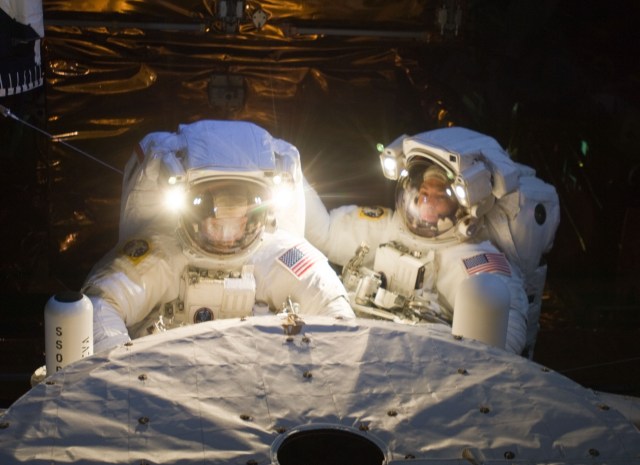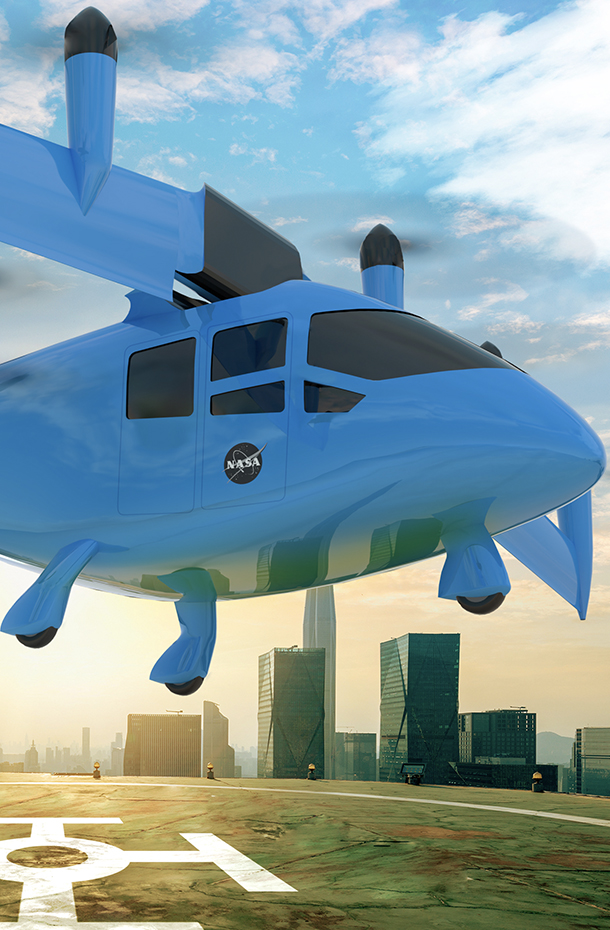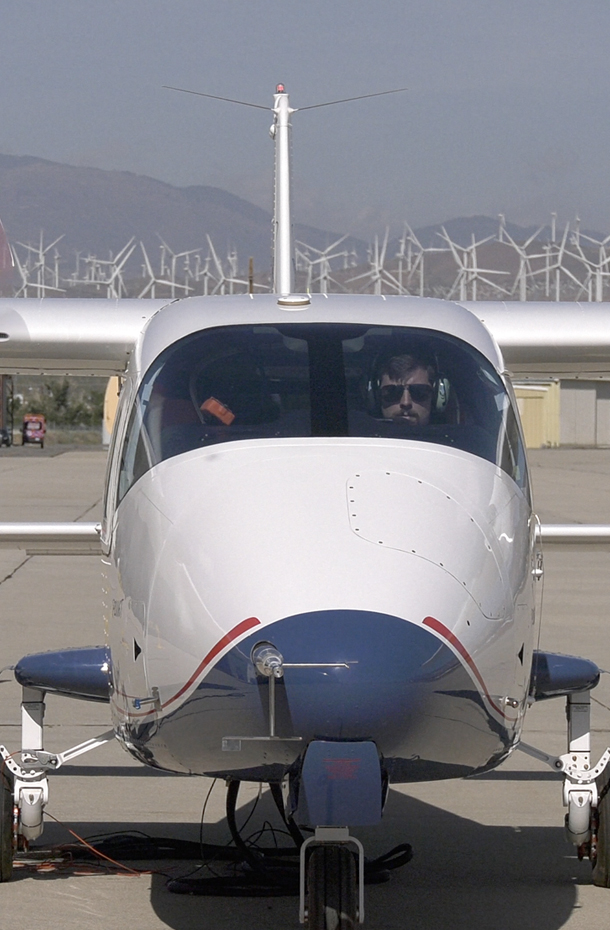LEGEND: ARMD NASA CENTERS
ARC = Ames Research Center
AFRC = Armstrong Flight Research Center
GRC = Glenn Research Center
HQ = Headquarters
LaRC = Langley Research Center
Technology and Innovation
Winner (Individual)
John Robinson, ARC
As the technical lead for super density operations in the Airspace Systems Program, Robinson conceived, developed and contributed to innovative and significant technical efforts that will form the basis for the Innovative Concepts in Aviation’s Airspace Technical Demonstration. The demonstration will combine novel technologies such as precision time-based scheduling, speed control and advanced communication, navigation, and surveillance to enable sustained peak aircraft throughput utilizing environmentally friendly operations in a terminal airspace environment. The successful demonstration will provide long-term benefit to ARMD, NASA and the flying public by accelerating the integration of a broad range of air- and ground-based technologies needed for NextGen terminal operations.
Winner (Group)
IVHM Data Mining, ARC
The IVHM Data Mining Lab develops and implements data-driven methods for anomaly detection, diagnosis, and prediction and adapts them to the problem, thereby enabling proactive management of the safety risk of the national air transportation system. The lab has developed several novel algorithms that represent technical innovations oriented toward making data mining algorithms that are more suitable for aviation safety than the current state of the art, and applied them to night-recorded data from commercial aircraft and aviation safety reports. The lab’s deployment of one of its algorithms, Orca, at Southwest Airlines led to a change in the airline’s operations – new events were added to their daily exceedance review.
Team Lead: Nikunj Oza
View Group Winners
Honorable Mention (Individual)
Allen Parker, DFRC
An expert in fiber-optic instrumentation, Parker has led the development of miniaturized fiber-optic based strain measurement technology that can be used in flight capable systems, and that provides sample rates appropriate for research data gathering and for possible use in aircraft control systems and other non-aerospace technologies. His work on miniaturizing the system’s electronics and streamlining algorithms running on those electronics resulted in small suitcase-sized systems that can acquire data from thousands of individual sensors. NASA is exploring these systems for active control of extreme lightweight airframe structures. The medical device industry is exploring use of this technology in advanced medical instruments.
Honorable Mention (Group)
UH-60 Airloads Wind Tunnel Test Team, ARC and LaRC
The UH-60 Airloads Wind Tunnel Test Team successfully completed the most highly-instrumented experimental investigation of a full-scale rotor ever attempted. The data acquired in the National Full-Scale Aerodynamics Complex is considered extremely valuable because the measurements are for a full-scale rotor operating at conditions that would never be safe to fly, such as deep retreating blade stall and high-speed conditions. The team acquired a broad spectrum of difficult measurements, including total forces on the rotor system, blade unsteady pressures in the rotating frame, measurements of the blade motion (twisting and bending) around the entire azimuth rotation, and measurements with two systems of the wake as it was created immediately behind a blade and following the wake downstream. This set of measurements and conditions will provide the gold standard for validation of computational methods for the next decade, enabling the identification of physical phenomena that have limited rotor design and prediction methods.
View Honorable Mention Team
Leadership and Management Excellence
Winner (Individual)
Gary Roberts, GRC
As a challenge problem owner in the Aging Aircraft and Durability program and as task lead for materials and structures for NASA’s Fundamental Aeronautics Program Subsonic Rotary Wing Project, Roberts developed highly effective, well-structured, multidisciplinary research efforts that promoted collaborations across NASA centers. He built new capabilities within the agency to support current and future ARMD-related research and has made an effective use of NASA’s Small Business Innovative Research program, NASA educational programs and unfunded industry collaborations through Space Act Agreements to leverage these funding sources to accelerate technology development, reduce programmatic costs and risk, and advance ARMD and project goals.
Winner (Group)
National Force Measurement Technology Capability Project, LaRC
Established in 2009, the National Force Measurement Technology Capability Project has provided design, calibration, and experimental support to approximately 90 percent of wind tunnel experiments associated with NASA’s aeronautics, science and exploration missions. NASA’s Aeronautics Test Program had identified force measurement as one of the fundamental capabilities to achieving its charter; it is also a key aeronautical capability addressed by the National Aeronautics Research and Development Policy.
TEAM LEAD: Ray D. Rhew
View Group Winners
Honorable Mention (Individual)
Thomas Norman, ARC
As leader of one of the largest technical disciplines in NASA’s Fundamental Aeronautics Program Subsonic Rotary Wing Project, Norman integrated a diverse and multidisciplinary workforce from three NASA centers into a strong, coordinated team. Under his leadership, the Subsonic Rotary Wing aeromechanics discipline has developed and is conducting joint research projects with the U.S. Army, and international partners in Germany, France and Japan.
Program and Mission Support
Winner (Individual)
Joseph Rossoll, GRC
As data systems technical lead for the Data Systems Branch in the Testing Division at NASA’s Glenn Research Center, Rossoll provided outstanding technical guidance and leadership for four ARMD test projects across different programs.
Winner (Group)
Aerospace Simulation Research and Development Branch (SimLabs), ARC
SimLabs’ flight and air-traffic control simulation facilities supported eight human-in-the-loop simulations that evaluated novel concepts and technologies in aircraft control and air traffic management for three ARMD research programs. Simulations included a large civil tilt rotor aircraft concept that facilitates passenger transport to and from urban areas, an emergency landing planner for damaged aircraft, a concept and tools for conducting closely-spaced parallel approaches in poor weather, automation concepts to assist with continuous descent advisories for efficient descents, and runway/departure scheduling concepts for improved airport operations. SimLabs’ work furthers ARMD’s research goals by evaluating the human interface aspects of novel NextGen and aircraft concepts in operational contexts and by showing the path ahead to implementing these concepts.
TEAM LEAD: Bimal Aponso
View Group Winners
Strategic Partnerships
Winner (Individual)
Wendell Ricks, LaRC
Ricks led highly productive multi-center, multi-agency, government, contractor and industry teams to develop national level documents. With his broad understanding of aviation safety and airspace issues and his ability to work with diverse groups, he successfully provided the Joint Planning and Development Office (JPDO) with helpful insights into developing its products and balancing its portfolio. He continues to play a critical role in building strategic partnerships with the JPDO.
Winner (Group)
Shape Memory Alloy Team, GRC
The Shape Memory Alloy (SMA) team significantly advanced the state of the art in the development of adaptive components for aircraft systems. By proactively forming strategic partnerships across a wide variety of organizations, the SMA team achieved major breakthroughs in fundamental understanding that were used to develop new alloys capable of higher (+ 300°C) operating temperature, new fundamental understanding and behavior models, and to successfully complete numerous engineering demonstrations. The team formed and maintains the Consortium for the Advancement of Shape Memory Alloy Research and Technology, which includes government, industry and university members. The consortium has made significant strides in SMA fundamental understanding, in developing test standards, and in developing and demonstrating new applications including variable geometry chevrons, adaptive inlets, smart fasteners, and adaptive wing trailing edges.
TEAM LEAD: Ronald Noebe
View Group Winners
Honorable Mention (Individual)
David Arend, GRC
Arend has accomplished exemplary work in managing the strategic NASA Research Announcement partnership between NASA’s Fundamental Aeronautics Program Subsonic Fixed Wing Project and United Technologies Research Center/Virginia Tech. The partnership is aimed at advancing embedded propulsion technologies. Through Arend’s efforts it now includes NASA experts from different research projects and field centers, and from organizations representing industry, academia and other governmental agencies (e.g., Boeing, MIT, the Air Force Research Laboratory, and the Arnold Engineering Development Center).
High Potentials
Winner
Maryam Kamgarpour, ARC
Kamgarpour made significant contributions in the use of advanced scheduling, controller-managed spacing, and flight deck-based interval management to achieve the generally competing objectives of fuel efficiency and throughput. Her research findings are the focus of the Aerospace Technical Demonstration proposal recently presented to ARMD.
Winner (Group)
Large Scale Low-Boom Supersonic Inlet Student Team, GRC
Through a NASA Research Announcement, a model design team at the University of Illinois at Urbana-Champaign was funded to design and fabricate a large-scale inlet for testing in the NASA Glenn 8- by 6-Foot Supersonic Wind Tunnel. Designed to provide the high performance and low boom characteristics required by a potential new class of civil supersonic aircraft, the Mach 1.7 inlet was tested in October 2010. The team’s three graduate students proved key to the test’s success because of their contributions in the areas of design-by-computational fluid dynamics-analysis, and the development and implementation of a pressure-sensitive paint flowfield diagnostic technique internal to the inlet — the first time this was done in the 8’x6′ tunnel.
View Group Winners
Honorable Mention (Individual)
Damon Rousis, GRC
Rousis, a doctoral candidate at the Georgia Institute of Technology, adopted the Open MDAO analysis framework to help develop a new optimization method called Globally Adjusted Expected Improvement. The new method can dramatically reduce the computational cost of employing high-fidelity analysis codes in design optimizations. Rousis’ changes resulted in the addition of a unique, innovative capability to the Open MDAO framework, which provides increased flexibility and re-usability to its users.
ARMD Associate Administrator Award
































